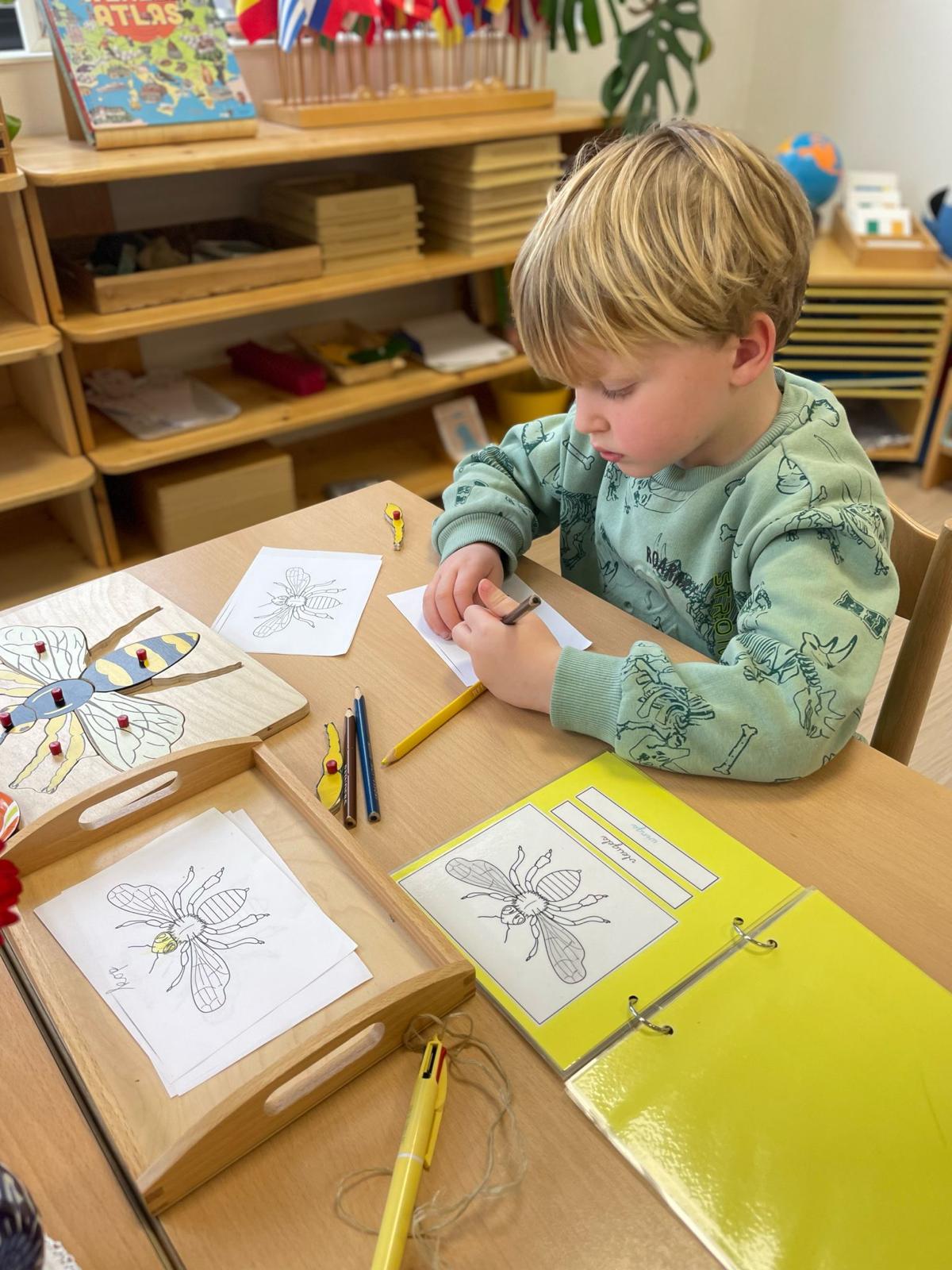Would you rather listen to this article via an (AI-generated) podcast? Then click here!
At Casa, we often emphasize that it is not desirable for parents to engage in school-like activities with their child at home. This can undermine the child’s sense of independence. Moreover, such activities often focus on the end result, while we place great value on the process—the child’s journey toward self-direction and intrinsic motivation.
That said, there are meaningful ways in which parents can support their child’s learning process without compromising that independence. Two powerful ways to do this are:
- Supporting the development of a rich vocabulary.
- Fostering phonemic awareness—the ability to hear and identify sounds within words.
A well-established Montessori method that supports both of these areas, and that can easily be used at home, is the Three-Period Lesson. (This can also be done in the mother tongue of the child)
Supporting Your Child’s Learning at Home: The Montessori Three-Period Lesson
At our Montessori Children’s House, we introduce new concepts using a carefully designed technique called the Three-Period Lesson. This method helps young children make clear connections between objects and their names in a structured yet natural way. You can use this approach at home to support your child’s learning, making new vocabulary and concepts more accessible and meaningful.
What is the Three-Period Lesson?
The Three-Period Lesson is a step-by-step way to introduce new language and concepts. It was originally developed by Édouard Séguin, a pioneer in special education, and later refined by Dr. Maria Montessori. It is used in various Montessori activities, including sensorial learning, language development, and mathematics.
This method ensures that children not only hear new words but also connect them with their meanings through hands-on experience. We typically present three objects or concepts at a time—ones that are related but clearly distinct from one another—to help avoid confusion.
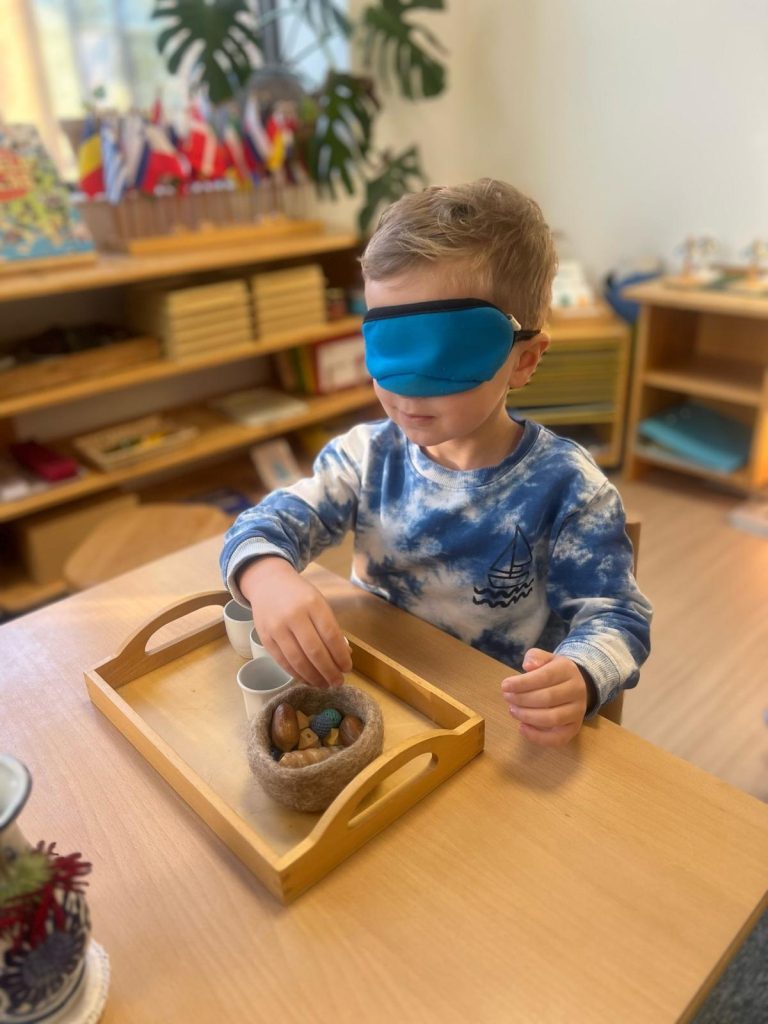
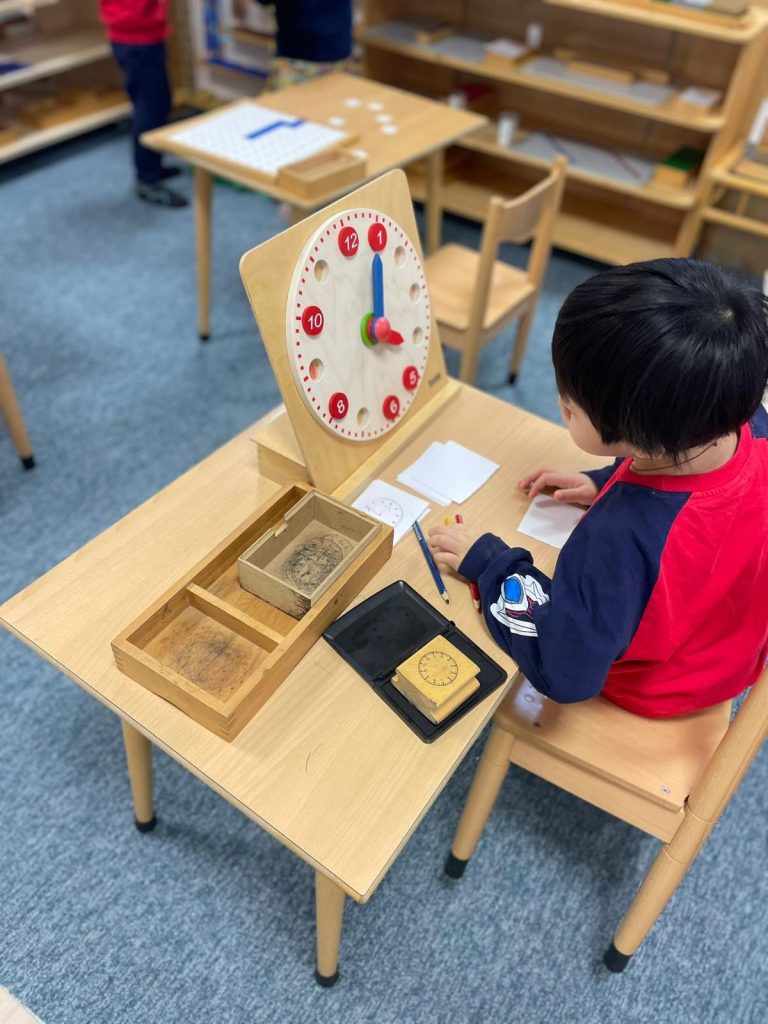
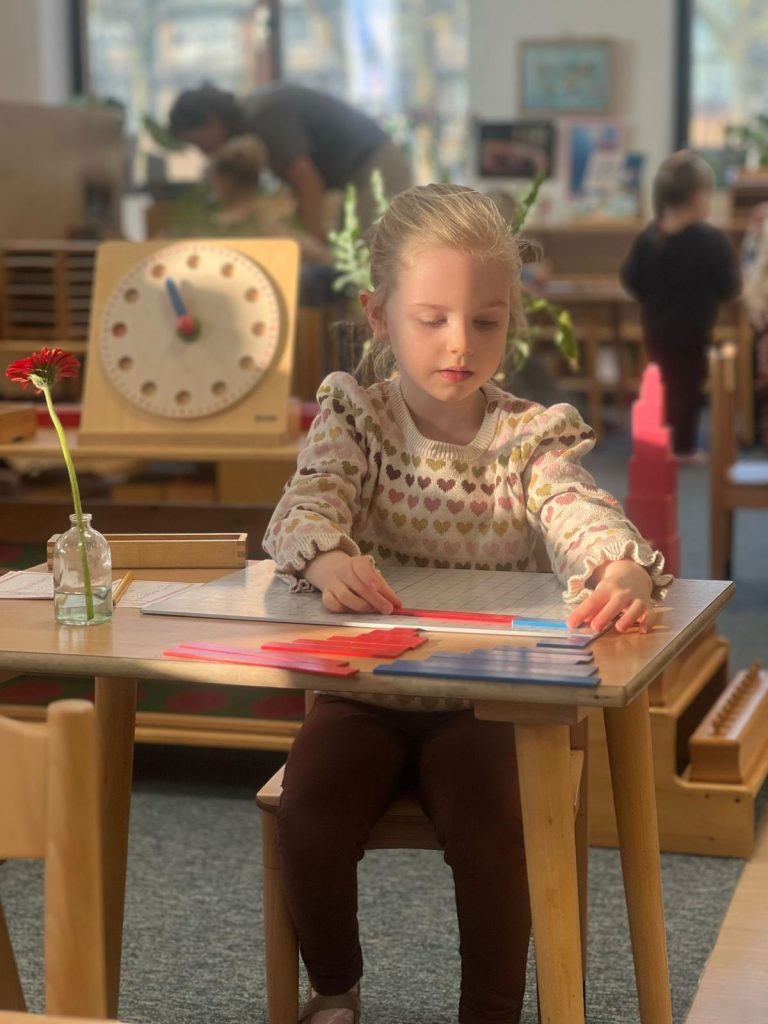
How We Use the Three-Period Lesson in the Classroom
When introducing a new concept, we follow these three steps:
Stage 1: Naming the Concept (Introduction)
- We present each object one at a time, name it, and encourage the child to repeat the name.
- If applicable, we invite the child to feel the object to reinforce learning through touch.
- We keep the language simple, using only the necessary noun and adjective (e.g., “This is rough”).
- After naming all three items, we repeat the names while pointing to each object.
Stage 2: Connecting the Object with Its Name (Practice & Recognition)
- This stage is the longest and most important because it strengthens the child’s memory of the concept.
- We ask the child to interact with the objects in different ways. For example:
- “Can you place the spoon in the corner of the table?”
- “Show me the rough surface.”
- We do not correct the child by repeating the first stage. If the child is unsure, we make a mental note to revisit that item in another lesson.
- We keep the session lively and engaging, showing enthusiasm when the child makes correct connections.
- We respond by every now and then saying: “That is rough indeed.” instead of “Good job!”
Stage 3: The Child Names the Object (Verification & Mastery)
- We check the child’s understanding by asking them to name each object when we feel like they are ready to do this successfully.
- If the child remembers all names, we repeat the process a few times to build confidence.
- If they struggle, we simply make note of it and present the lesson again another day.
How You Can Use This at Home
You don’t need special Montessori materials to try the Three-Period Lesson at home. You can use everyday household objects to introduce new vocabulary and concepts. Here’s how:
- Choose three related but distinct objects.
- Example: A spoon, a fork, and a knife.
- Example: An equilateral triangle, a right-angled isosceles triangle and an obtuse-angled scalene triangle.
- Follow the three steps of the lesson.
- Name each object clearly.
- Ask your child to point out the right object by asking for it in in different ways, keeping the nature of the material in mind (rough and smooth are good for touching, shapes are good for feeling around the edges). Take your time for this step, keep it fun and stay away from quizzing.
- Invite your child to name the objects independently.
- Make it fun and engaging.
- Keep your tone warm and encouraging.
- Use positive reinforcement instead of correction.
- Choose topics that interest your child, like animals, colors, or favorite toys.
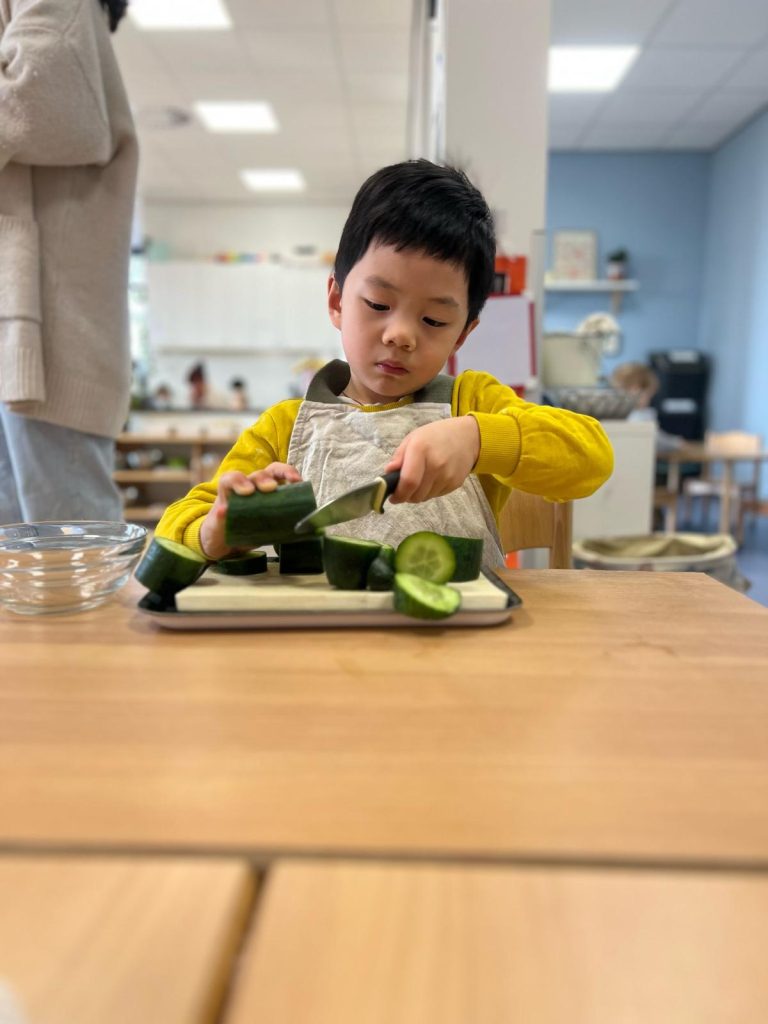
Why This Method Works
The Three-Period Lesson respects how young children naturally learn—through interaction, repetition, and hands-on experiences. It helps them absorb new vocabulary at their own pace, without pressure or frustration. By using this approach at home, you can reinforce what they learn in the classroom and support their growing curiosity about the world.

